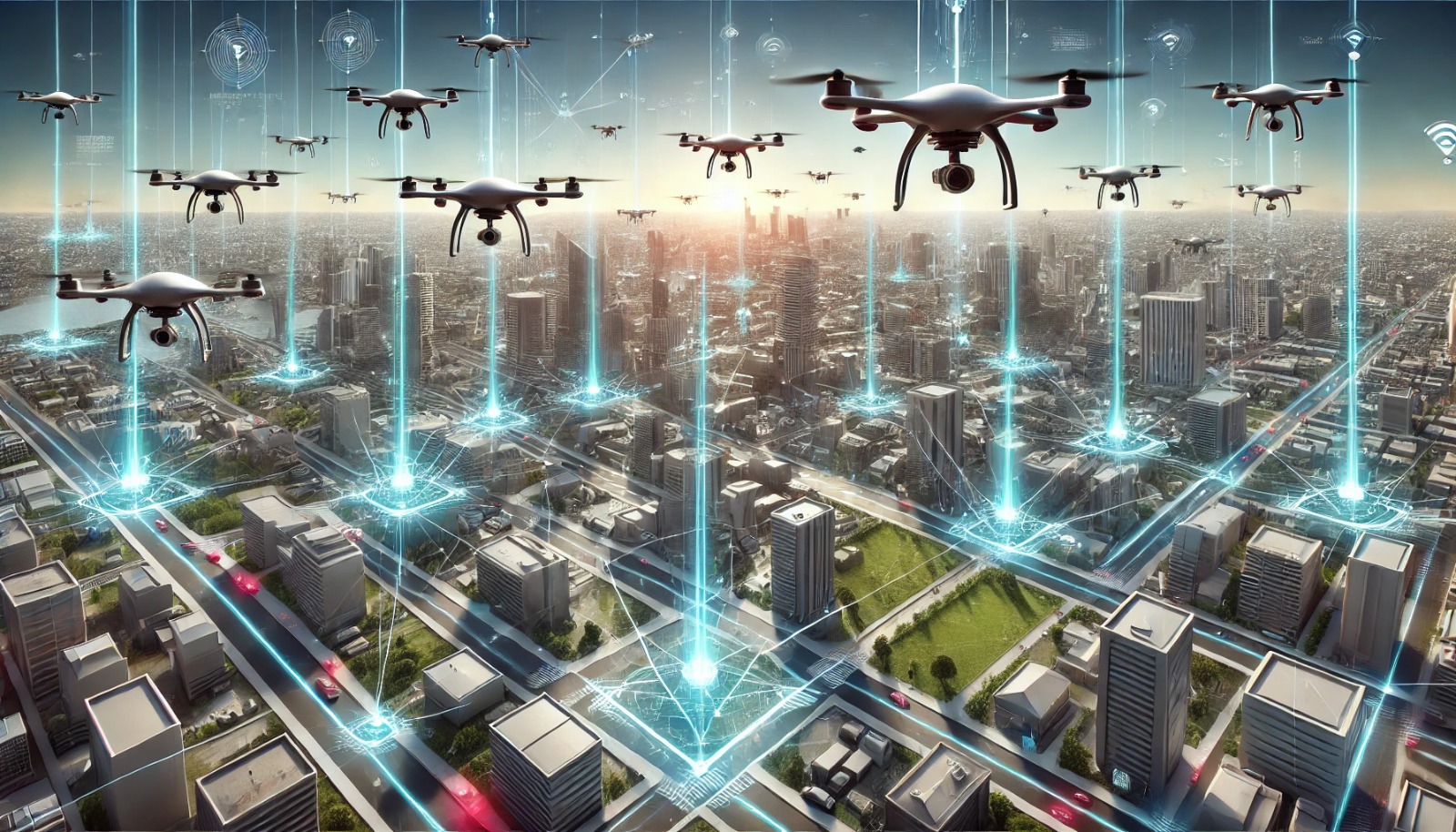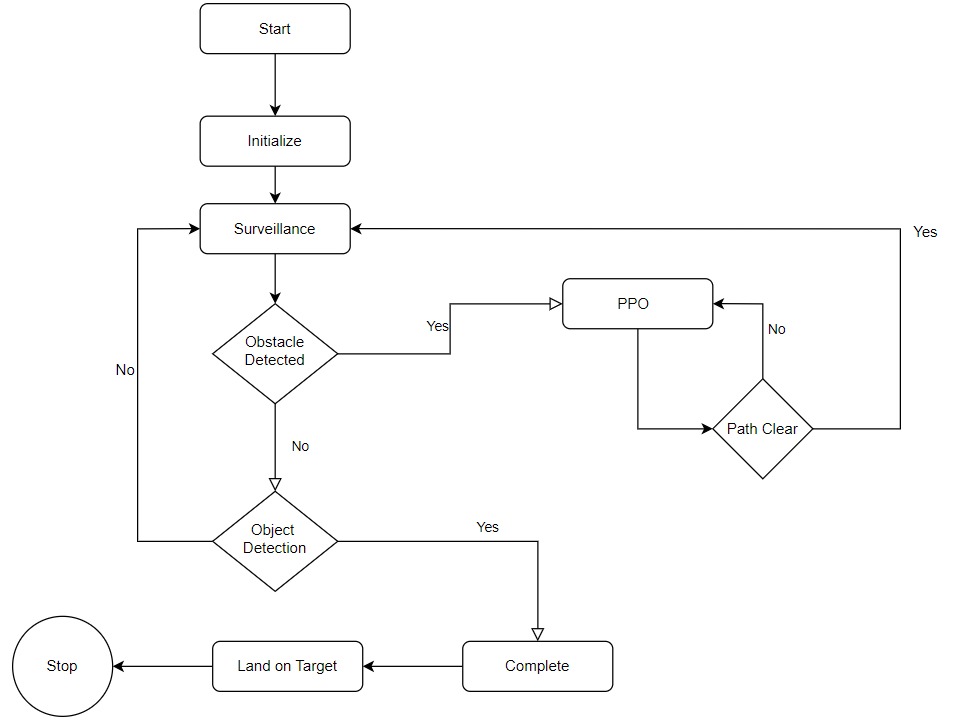MaRL-Ppo: Multi-Agent drone surveillance using deep Reinforcement learning in urban areas.


Project Team : Viswesh & Gopi
In surveillance operations, a critical challenge is optimizing the field of view (FoV) of the monitoring system. The effectiveness of surveillance increases with a larger FoV, enabling broader coverage and reducing the chances of undetected activity. To address these challenges, we focus on deploying autonomous drones capable of intelligent decision-making using Deep Reinforcement Learning (DRL) to enhance surveillance tasks. DRL allows the drones to learn and adapt to complex and dynamic environments, improving their ability to navigate urban areas, avoid collisions, and manage power efficiently.
Simulation-Driven Development: Use Unity to create a 3D environment for drone surveillance, refining the environment and ML models iteratively. Multi-Agent Reinforcement Learning (MARL) enables autonomous drone collaboration in complex environments. PPO: Apply Proximal Policy Optimization for stable and efficient learning of drone behaviors.
Reward Shaping: Create a reward function for optimal area coverage, obstacle avoidance, and coordination. Observation & Actions: Define each drone’s perceptions (e.g., objects, other drones) and actions (e.g., movement, communication). Multi-Agent Communication: Use C# scripts for inter-drone information sharing and coordination.
Back